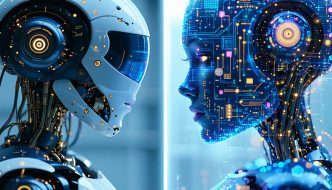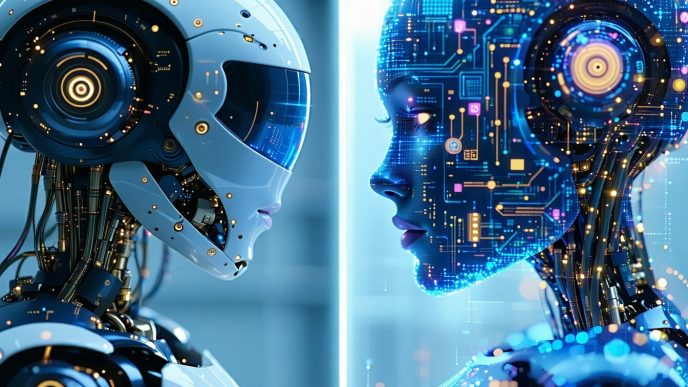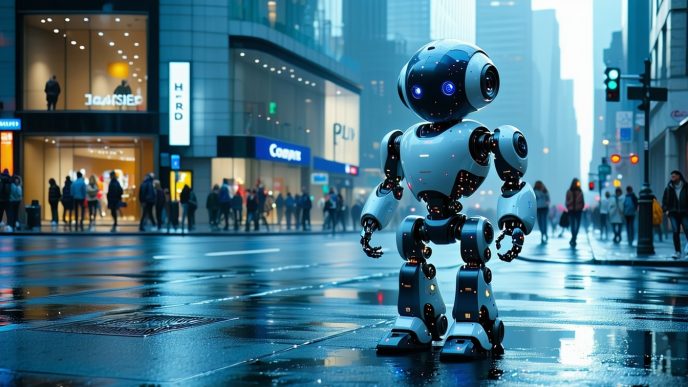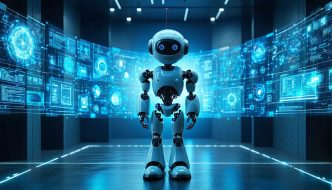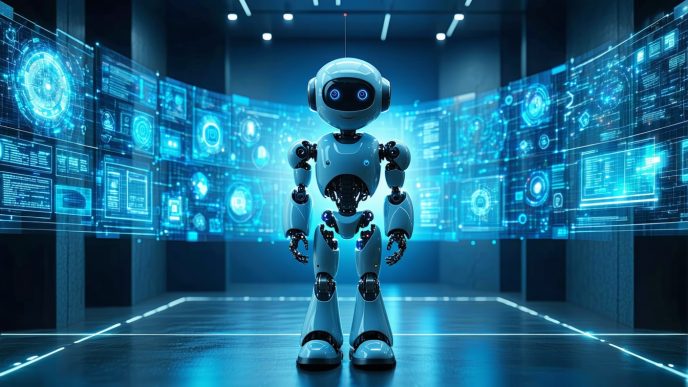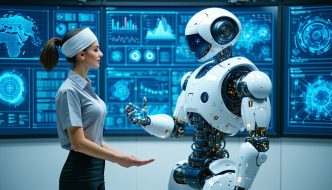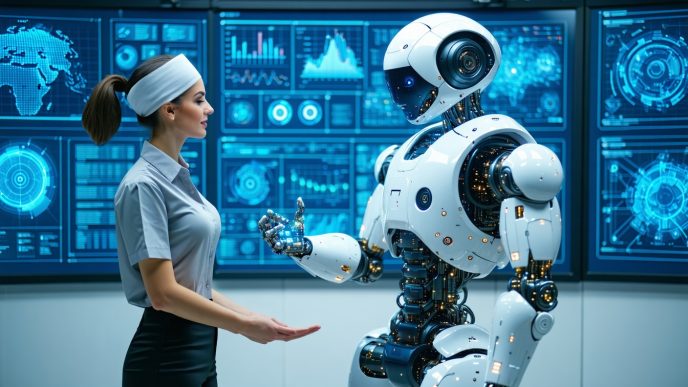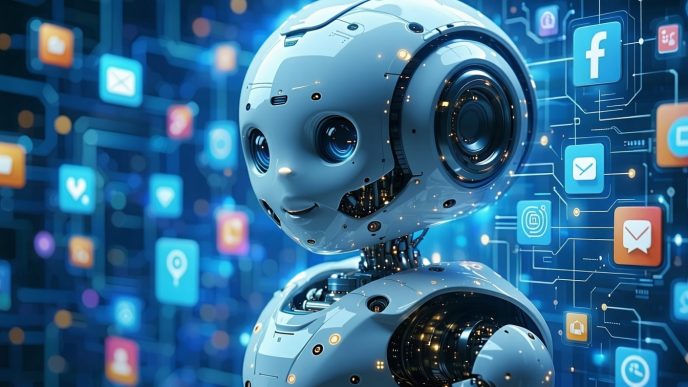The Role of Language Models in Humanoid Robots
Introduction to Language Models
Language models are advanced systems designed to understand and generate human-like text based on input they receive. These models are a significant component in the development of humanoid robots, enabling them to interpret natural language and interact with humans effectively. By leveraging vast datasets and machine learning techniques, language models learn to complete sentences, answer questions, and engage in conversations, making them essential for enhancing the communication abilities of robots.
The technology behind language models has evolved rapidly, with models becoming more sophisticated and capable of understanding context, tone, and intent in human speech. This evolution supports various applications in robotics, significantly improving how humanoid robots can serve in personal, educational, and professional environments.
How Language Models Power Modern Robots
Language models empower modern humanoid robots by facilitating their interaction with humans. These robots use advanced AI models to process natural language and produce relevant responses, thereby enhancing human-robot relationships.
Key functions of language models in humanoid robots include:
-
Voice Recognition: Robots equipped with sophisticated language models can accurately recognize spoken commands and queries, allowing for more seamless interactions. This capability is critical for scenarios such as voice interfaces in humanoid robots.
-
Natural Language Processing (NLP): With NLP capabilities, robots can understand and analyze human language, interpret nuances and provide contextually appropriate responses. This helps in various contexts, including education and companionship.
-
Learning and Adaptation: Many AI models in humanoid robots are designed to learn from their interactions over time, improving their responses and understanding of specific user preferences. This adaptive learning can significantly enhance user experience, particularly in applications like humanoid robots for companionship.
-
Task Execution and Assistance: Language models enable robots to help users execute tasks based on verbal instructions, making them suitable for roles in elder care, education, and daily chores.
Here’s a summary of how AI models transform functionalities in humanoid robots:
| Functionality | Description |
|---|---|
| Voice Recognition | Captures and understands spoken language |
| Natural Language Processing | Analyzes text for context and meaning |
| Learning and Adaptation | Adjusts behavior based on user interactions |
| Task Execution | Fulfills tasks through verbal commands |
The integration of language models into humanoid robots highlights the pivotal role of AI in enhancing their usability and effectiveness. As these technologies advance, the potential for robots to engage with humans becomes increasingly profound, paving the way for innovative applications across various fields. For further insights into the intricate developments in humanoid robots, refer to our exploration of humanoid robots in healthcare and humanoid robot design challenges.
Evolution of Humanoid Robots
The development of humanoid robots has seen remarkable advancements in technology over the years. This evolution encompasses improvements in robotics and the integration of artificial intelligence (AI) models, which have transformed the landscape of humanoid robotics.
Advancements in Robotics
Humanoid robots have evolved significantly thanks to rapid advancements in robotics technology. Key areas of improvement include mobility, dexterity, and sensory perception. Modern robots are increasingly capable of mimicking human-like movements and behaviors.
The following table outlines some notable advancements in robotics:
| Feature | Description | Examples |
|---|---|---|
| Mobility | Enhanced locomotion systems allow for smoother movement | humanoid robot locomotion systems |
| Dexterity | Improved fine motor skills for handling objects | humanoid robots for daily chores |
| Sensory Systems | Advanced sensors improve interaction with the environment | humanoid robot sensors |
These advancements have led to more realistic and functional humanoid robots, making them suitable for various applications, including education, healthcare, and home use.
Integration of AI in Humanoid Robots
The integration of AI models in humanoid robots has been a game-changer. These AI models enhance the ability of robots to perform complex tasks and understand human commands. Through machine learning and natural language processing, humanoid robots can interact more effectively and intuitively with humans.
Several notable AI integrations include:
| AI Technology | Functionality | Related Topics |
|---|---|---|
| Voice Interfaces | Enables robots to understand and process spoken commands | voice interfaces in humanoid robots |
| Emotion Recognition | Allows robots to gauge human emotions and respond appropriately | emotion recognition in robots |
| Problem Solving | Equips robots with capabilities to tackle complex issues | ai models in humanoid robots |
The fusion of AI with humanoid robotics has not only improved user experience but also paved the way for robots that can assist in various sectors, like healthcare and elder care. The integration of these advanced technologies underscores the potential for future developments in the field.
Large Language Models
What Are Large Language Models?
Large language models (LLMs) are advanced algorithms designed to understand and generate human-like text. Utilizing extensive datasets, these models learn patterns, grammar, and context related to language, enabling them to perform a variety of language tasks. They harness deep learning techniques to process vast amounts of data and generate coherent responses based on user input.
Language models like these are characterized by their size, complexity, and ability to adapt language for specific contexts. Their functionality extends beyond mere text generation, allowing them to engage in conversations, answer questions, and provide contextually relevant information.
| Feature | Description |
|---|---|
| Size | Typically in billions of parameters |
| Training Data | Large datasets, including books, articles, and websites |
| Capabilities | Text generation, translation, summarization, Q&A |
Applications of Large Language Models in Robotics
In robotics, particularly humanoid robots, large language models play a vital role in enhancing communication and interaction with humans. These models contribute to several key applications:
-
Natural Language Understanding: LLMs enable robots to comprehend spoken and written language, allowing for more intuitive human-robot interactions. They can process commands and questions in natural language.
-
Conversational Intelligence: With LLMs, humanoid robots can engage in meaningful conversations, responding appropriately to user queries. This capability is essential for applications in education and customer service. For more about communication, refer to our article on voice interfaces in humanoid robots.
-
Personalization: Large language models can tailor responses based on individual user preferences and past interactions, enhancing the user experience. They can remember context from previous conversations to offer a more personalized interaction.
-
Emotional Recognition: By understanding sentiment in language, robots can adjust their responses appropriately to match the emotional state of users. This application is crucial for robots designed for companionship or emotional support. Explore our insights on emotion recognition in robots.
-
Problem Solving: Robots equipped with LLMs can assist in complex tasks by comprehending instructions and providing solutions. Their capability to analyze and synthesize information allows for more advanced problem-solving in various environments.
The integration of LLMs into humanoid robots not only enhances their communication but also expands their utility in various fields, including healthcare, education, and personal services. As these models continue to evolve, their applications in robotics will likely grow even more sophisticated. For more information on the challenges that come with these advancements, see our section on AI models in humanoid robots.
Benefits of AI Models in Humanoid Robots
The integration of AI models into humanoid robots has led to significant advancements in their functionality. These models enhance their communication abilities, improve interactions with humans, and boost problem-solving skills.
Enhanced Communication Abilities
AI models facilitate superior communication in humanoid robots by enabling them to understand and process natural language. This capability allows robots to engage in meaningful conversations, respond to questions accurately, and follow complex commands.
The effectiveness of communication can be measured by the following factors:
| Factor | Description |
|---|---|
| Vocabulary Size | Number of words and phrases the robot can recognize and use. |
| Response Time | Speed at which the robot can comprehend and reply. |
| Context Understanding | Ability to grasp the context of a conversation to provide relevant responses. |
Humanoid robots equipped with advanced AI models demonstrate an impressive vocabulary and context awareness, significantly enhancing their interactions in various settings, including homes, workplaces, and educational environments. For more insights into how these robots communicate, refer to our article on voice interfaces in humanoid robots.
Improved Human-Robot Interactions
The incorporation of AI models transforms human-robot interactions, making them more intuitive and engaging. Robots can now discern emotional cues and respond appropriately, leading to enhanced rapport with users. This progress is vital in sectors such as elder care and education, where personal interactions are crucial.
The improvement in human-robot interactions can be summarized as follows:
| Interaction Aspect | Impact |
|---|---|
| Emotional Recognition | Robots can identify and react to human emotions, improving responsiveness. |
| Tailored Interactions | AI models allow robots to customize experiences based on user preferences. |
| Engagement Level | More engaging interactions lead to higher satisfaction among users. |
Humanoid robots that excel in communication and understanding emotions can significantly enhance the quality of user experiences in healthcare, companionship, and education. For a broader perspective on these applications, explore our article on humanoid robots in elder care.
Advanced Problem-Solving Capabilities
AI models also empower humanoid robots with advanced problem-solving skills. Equipped with large datasets and algorithms, these robots can analyze complex scenarios, make decisions, and suggest solutions efficiently.
Key aspects of problem-solving capabilities include:
| Capability | Description |
|---|---|
| Data Analysis | Ability to process large amounts of information for informed decision-making. |
| Learning from Experience | Robots can adapt based on previous interactions or tasks they have performed. |
| Autonomous Decision Making | Enhanced AI allows robots to complete tasks with minimal human intervention. |
This advancement is pivotal in settings where robots are required to assist in logistics, healthcare, or even daily chores. For more information on the practical applications of these capabilities, visit our article on humanoid robots for daily chores.
The benefits of AI models in humanoid robots extend beyond improved functionalities. They are fostering new opportunities in various fields, enhancing the way humans interact with machines, and leading to innovative applications across industries.
Challenges and Limitations
While the integration of AI models in humanoid robots offers numerous advantages, there are several challenges and limitations that must be addressed. This section outlines key ethical concerns, technical limitations, and the ways to overcome these challenges.
Ethical Concerns
As humanoid robots become increasingly sophisticated, ethical considerations arise regarding their use and influence on society. Some major ethical concerns include:
| Ethical Issue | Description |
|---|---|
| Privacy | The collection of personal data during human-robot interactions raises issues about privacy and data security. |
| Decision-Making | The delegation of decisions to robots could lead to moral dilemmas, especially in critical situations. |
| Job Displacement | Increased use of robots in various fields may lead to concerns over job losses for human workers. |
Addressing these ethical concerns is essential for developing trust and ensuring the responsible use of humanoid robots.
Technical Limitations
Despite their advancements, humanoid robots face several technical challenges that can hinder their performance. Key limitations include:
| Technical Limitation | Description |
|---|---|
| Processing Power | The computational demands of AI models require significant processing power, which can limit real-time responsiveness. |
| Learning Capabilities | Current models may struggle to learn and adapt to new environments or tasks without extensive programming. |
| Physical Constraints | The design and physical features of robots may restrict their movement, affecting functionality and interaction. |
These technical issues must be addressed to enhance the effectiveness of AI models in humanoid robots, allowing for improved performance in various applications.
Overcoming Challenges
Several strategies can be employed to tackle the challenges and limitations associated with ai models in humanoid robots. They include:
- Developing Robust Protocols: Establishing guidelines for ethical AI use can help mitigate privacy concerns and promote responsible integration.
- Enhancing Hardware and Software: Investing in advanced computing systems and refining algorithms can address technical limitations, improving processing capabilities and adaptive learning.
- Collaborative Efforts: Engaging diverse stakeholders, including ethicists, technologists, and policymakers, can facilitate comprehensive solutions and foster public understanding.
Through these efforts, the continued evolution of humanoid robots can proceed confidently while navigating existing challenges. For insights into the practical applications of humanoid technology, explore our articles on humanoid robots for home use and humanoid robots for elder care.
Future Implications
Potential Developments in Humanoid Robotics
The future of humanoid robotics appears promising, fueled by advancements in artificial intelligence (AI) and machine learning. As these technologies evolve, future humanoid robots are expected to exhibit improved functionality and capabilities. One significant area of development is enhanced autonomy, which allows robots to perform complex tasks without manual intervention.
Another potential development is the integration of more sophisticated sensory systems. Humanoid robots may incorporate advanced sensors that enable them to interact more dynamically with their environments. This can lead to new applications in various fields, including elder care, education, and smart homes. Below is a table summarizing some anticipated advancements in humanoid robotics.
| Development Area | Description | Potential Applications |
|---|---|---|
| Increased Autonomy | Robots can make decisions and perform tasks independently. | Daily chores, elder care, logistics |
| Enhanced Sensory Systems | Improved sensors for better environmental interaction. | Smart homes, healthcare, customer service |
| AI-Driven Emotional Intelligence | Robots can recognize and respond to human emotions. | Companionship, therapy, education |
| Customization Capabilities | Users can personalize robot functions and appearances. | Personal assistants, home robots, education tools |
Impact of Language Models on Future Robots
Large language models (LLMs) will play a crucial role in shaping the functionality of future humanoid robots. These models provide robots with the ability to understand and generate human-like language, facilitating more natural interactions with users. The implications of this capability are far-reaching, from everyday tasks to specialized roles in various sectors.
With advanced language processing, humanoid robots could assist in education by providing personalized tutoring or support during learning activities. In healthcare settings, they could offer companionship or cognitive stimulation for patients. Furthermore, their ability to understand multiple languages could make them invaluable in diverse environments, such as multicultural workplaces or travel sectors.
The integration of LLMs will also enhance the adaptation of robots to user preferences. As robots learn from interactions, they can adjust their behavior to better align with user needs. This adaptability can make robots more effective companions and assistants.
Through the integration of AI models in humanoid robots, significant advancements are anticipated, paving the way for more sophisticated and versatile machines. For a more detailed understanding of the implications, readers can explore topics such as emotion recognition in robots and humanoid robots in healthcare.



